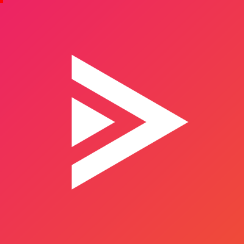- Lab
-
Libraries: If you want this lab, consider one of these libraries.
- Core Tech
Guided: Building a Multi-Section Landing Page
Transform your foundational HTML and CSS knowledge into a tangible, professional project. In this lab, you will build a complete, single-page portfolio website from the ground up. You’ll learn how to structure content semantically, write clean and reusable CSS for components like buttons and project cards, and implement polished features like smooth-scrolling navigation and interactive hover animations. By the end, you’ll have a visually appealing, multi-section webpage and the confidence to apply these essential patterns to your own projects.
Lab Info
Table of Contents
-
Challenge
Step 1: Setting the Foundation
Welcome! In this lab, you'll build a modern, multi-section landing page from scratch using HTML and CSS. You'll learn how to structure content semantically, style it with CSS, and create interactive components that respond to user interactions. By the end, you'll have a fully functional portfolio page that demonstrates best practices in web development, including responsive design, reusable components, and smooth animations. Start by setting up the foundational structure of your page. info > This lab experience was developed by the Pluralsight team using Forge an internally developed AI tool utilizing Gemini technology. All sections were verified by human experts for accuracy prior to publication. For issue reporting, please contact us.
-
Challenge
Step 2: Defining the Global Design System
A consistent design is crucial for a professional look. Here, you'll establish your site's visual identity by defining a color palette and base styles. You'll also enable smooth scrolling for a better user experience when navigating between sections.
-
Challenge
Step 3: Building the Header and Navigation
A clear and accessible navigation is one of the most important parts of a website. In this step, you’ll build the header, create the navigation links, and use modern CSS to make a sticky header that stays at the top of the viewport while the user scrolls.
-
Challenge
Step 4: Designing Reusable Components
To work efficiently and maintain consistency, developers create reusable components. Here, you’ll define the CSS for two key components: a call-to-action button and a project card. This Don’t Repeat Yourself (DRY) approach is a cornerstone of modern web development.
-
Challenge
Step 5: Populating and Arranging Content
With your reusable components designed, it's time to put them to use! You'll populate the projects section with multiple instances of your project card. Then, you'll use CSS Grid Layout to arrange them in a flexible, responsive grid that looks great on any screen size.
-
Challenge
Step 6: Adding Polish with Interactivity
The final step is to add a layer of polish that makes your page feel alive. You'll implement hover effects and smooth transitions on your navigation, buttons, and project cards. These small details significantly enhance the user experience and make your portfolio look professional.
About the author
Real skill practice before real-world application
Hands-on Labs are real environments created by industry experts to help you learn. These environments help you gain knowledge and experience, practice without compromising your system, test without risk, destroy without fear, and let you learn from your mistakes. Hands-on Labs: practice your skills before delivering in the real world.
Learn by doing
Engage hands-on with the tools and technologies you’re learning. You pick the skill, we provide the credentials and environment.
Follow your guide
All labs have detailed instructions and objectives, guiding you through the learning process and ensuring you understand every step.
Turn time into mastery
On average, you retain 75% more of your learning if you take time to practice. Hands-on labs set you up for success to make those skills stick.

